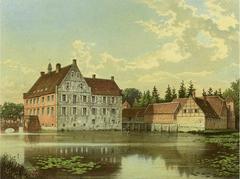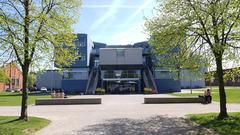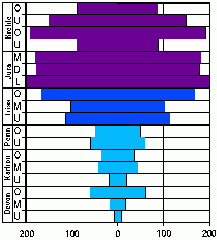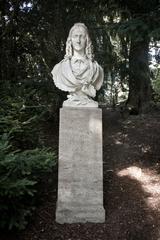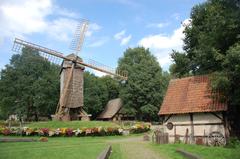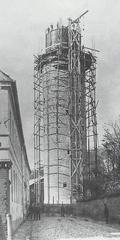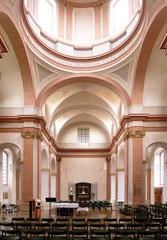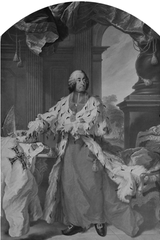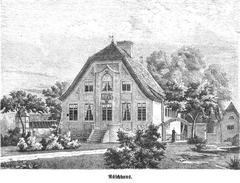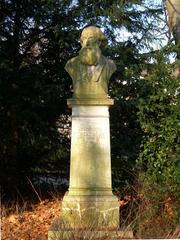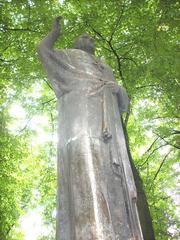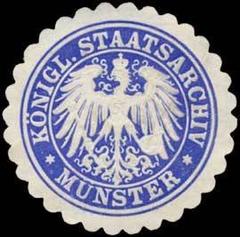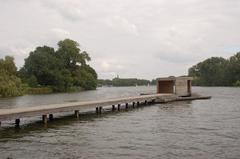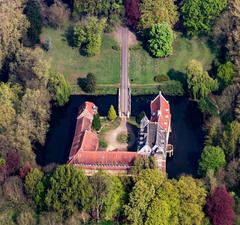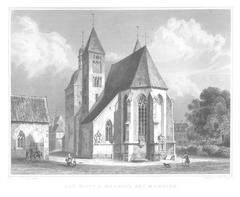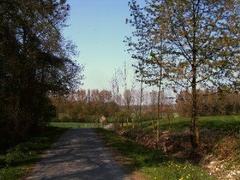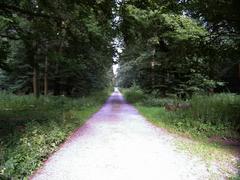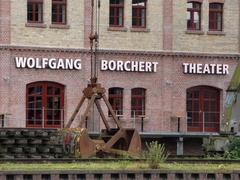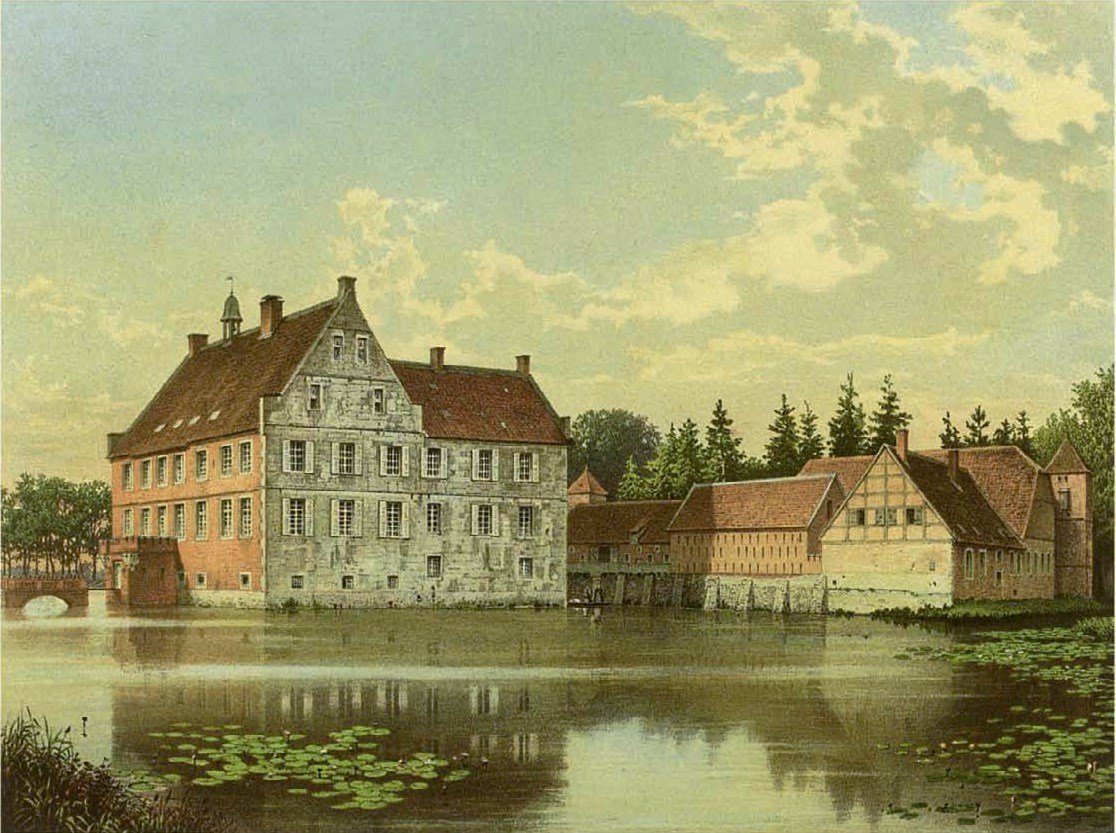
Visiting Burg Hülshoff: Hours, Tickets, and Historical Insights
Date: 19/07/2024
Introduction
Nestled near Münster, Germany, Burg Hülshoff is a captivating moated castle that embodies centuries of history, architectural innovation, and cultural significance. Originally a fortified farmhouse in the 11th century, the castle has evolved under the stewardship of various noble families, most notably the Droste-Hülshoff family from the 14th century onwards. This historical monument offers a unique blend of medieval fortifications and Renaissance elegance, with highlights such as the imposing 16th-century gatehouse and the picturesque courtyard. The castle is also intrinsically linked to Annette von Droste-Hülshoff, one of Germany’s most revered poets, who drew inspiration from her ancestral home. For modern visitors, Burg Hülshoff provides an immersive experience with its museum, showcasing Annette’s personal belongings and manuscripts, contemporary art exhibitions, and cultural events. The surrounding parkland, designed in the English landscape style, offers a tranquil escape with scenic paths and picnic spots. Whether you’re a history enthusiast, literature lover, or nature admirer, Burg Hülshoff promises a memorable visit. For more detailed information on visiting hours, tickets, and travel tips, continue reading our comprehensive guide. (Burg Hülshoff)
Table of Contents
- From Humble Beginnings to Fortified Manor - Tracing the Castle’s Origins
- The Droste-Hülshoff Era - Shaping the Castle’s Legacy
- Architectural Metamorphosis - Reflecting Changing Times and Tastes
- Annette von Droste-Hülshoff - A Poetic Presence
- Visiting Burg Hülshoff - Practical Information
- Preserving the Past for the Future - Burg Hülshoff Today
- Beyond the Walls - The Surrounding Beauty
- Exploring the Museum and Annette von Droste-Hülshoff’s Legacy
- Immersing in Art and Culture
- Embracing the Natural Beauty
- Planning Your Visit
- Beyond Burg Hülshoff
- Tips for a Memorable Visit
Burg Hülshoff - Visiting Hours, Tickets, and Historical Insights
Burg Hülshoff, nestled near Münster, Germany, is more than just a picturesque moated castle. It’s a living testament to centuries of history, architectural evolution, and cultural influence, deeply intertwined with the aristocratic Droste-Hülshoff family and the celebrated German poet Annette von Droste-Hülshoff.
From Humble Beginnings to Fortified Manor - Tracing the Castle’s Origins
The story of Burg Hülshoff begins in the 11th century, not as a grand castle, but as a humble fortified farmhouse. This early structure, likely built for protection during turbulent times, formed the nucleus of what would become the impressive castle we see today. Over the centuries, the estate passed through various noble families, including the Lords of Ahaus and the Knights of Deckenbrock. Each era left its mark on the building, with successive generations expanding and fortifying the structure to reflect their growing power and influence.
The Droste-Hülshoff Era - Shaping the Castle’s Legacy
In the 14th century, the estate came into the possession of the Droste-Hülshoff family, marking a pivotal moment in the castle’s history. The Droste-Hülshoffs, a powerful and influential family in the Münster region, would become synonymous with Burg Hülshoff, their lineage shaping the castle’s destiny for over six centuries.
Architectural Metamorphosis - Reflecting Changing Times and Tastes
Under the Droste-Hülshoffs, Burg Hülshoff underwent significant transformations, evolving from a medieval fortress into a stately residence. The 16th century saw the most dramatic changes, as the family embraced the Renaissance style sweeping across Europe. Gone were the austere fortifications, replaced by elegant facades, spacious windows, and ornate gables. The castle’s defensive capabilities were not entirely forgotten, however. The moat remained, and the main entrance was fortified with a gatehouse, reflecting a blend of security concerns and the desire for a more comfortable and aesthetically pleasing residence.
A Glimpse into the Past - Architectural Highlights
-
The Gatehouse: This imposing structure, dating back to the 16th century, welcomes visitors with its stepped gables, a characteristic feature of the Weser Renaissance style prevalent in the region. The gatehouse serves as a reminder of the castle’s defensive past while showcasing the architectural grandeur of the era.
-
The Courtyard: Stepping through the gatehouse, visitors are greeted by the castle’s picturesque courtyard. Surrounded by buildings from different periods, the courtyard offers a tangible timeline of the castle’s architectural evolution. The harmonious blend of styles, from the medieval foundations to the Renaissance flourishes, creates a captivating atmosphere.
-
The Knights’ Hall: Located in the oldest part of the castle, the Knights’ Hall harks back to the building’s medieval origins. This grand hall, once used for gatherings and feasts, now houses a collection of historical artifacts and furnishings, offering a glimpse into the lives of the castle’s former inhabitants.
Annette von Droste-Hülshoff - A Poetic Presence
No exploration of Burg Hülshoff is complete without acknowledging Annette von Droste-Hülshoff, one of Germany’s most celebrated poets. Born within the castle walls in 1797, Annette’s life and work are deeply intertwined with her ancestral home. Although she spent periods of her life elsewhere, Burg Hülshoff remained a constant source of inspiration for her writing. The surrounding landscapes, the castle’s history, and the people who inhabited it all found their way into her poems and prose, imbued with a sense of longing, observation, and a deep connection to her roots.
Visiting Burg Hülshoff - Practical Information
-
Visiting Hours: Burg Hülshoff is open to visitors from Tuesday to Sunday, 10:00 AM to 6:00 PM. It is closed on Mondays.
-
Tickets: Admission tickets can be purchased at the gatehouse. Prices are as follows:
- Adults: €10
- Students and Seniors: €7
- Children (ages 6-12): €5
- Children under 6: Free
-
Travel Tips: The castle is easily accessible by car and public transport. From Münster, take the regional train to Havixbeck and then a short bus ride to the castle. Parking is available on-site for those driving.
-
Nearby Attractions: While in the region, visitors can explore other historical sites such as the Münster Cathedral and the LWL Museum of Natural History. (Münster Cathedral, LWL Museum of Natural History)
-
Accessibility: Burg Hülshoff is partially accessible to wheelchair users. The ground floor and courtyard can be accessed, but some upper rooms may not be reachable.
Preserving the Past for the Future - Burg Hülshoff Today
Today, Burg Hülshoff stands as a beautifully preserved monument to history, architecture, and literature. Open to the public, the castle offers a captivating journey through time. Visitors can explore the meticulously maintained rooms, wander through the castle’s museum, which houses a collection of Annette von Droste-Hülshoff’s personal belongings and manuscripts, and immerse themselves in the history and legacy of this remarkable place.
Beyond the Walls - The Surrounding Beauty
The castle’s allure extends beyond its walls. The surrounding parkland, designed in the English landscape style, provides a tranquil escape. Visitors can stroll along winding paths, discover hidden groves, and enjoy breathtaking views of the castle reflected in the moat’s serene waters.
Exploring the Museum and Annette von Droste-Hülshoff’s Legacy
The Annette von Droste-Hülshoff Museum is housed within the estate, offering a captivating journey into the life and works of one of Germany’s most celebrated literary figures. Visitors can delve into her world through original manuscripts, letters, and personal belongings, gaining a deeper understanding of her creative process and the context of her writing.
Highlights of the museum include:
- Droste’s Room: This preserved room offers a poignant glimpse into the writer’s life, featuring her original furniture and personal items.
- The Library: Housing a vast collection of books, including first editions of Droste’s works and volumes from her personal library, this space offers insights into her literary influences.
- Rotating Exhibitions: The museum regularly hosts temporary exhibitions that delve deeper into specific aspects of Droste’s life, her works, or the historical context of her time.
Immersing in Art and Culture
Beyond the museum, Burg Hülshoff serves as a vibrant hub for contemporary art and cultural events.
Key attractions include:
- The Gallery: Located in the former servants’ quarters, the gallery showcases a diverse range of contemporary art exhibitions, often drawing connections to Droste’s work or the estate’s history.
- Literary Events: Throughout the year, Burg Hülshoff hosts a variety of literary events, including readings, author talks, and workshops, attracting literature enthusiasts from far and wide.
- Musical Performances: The estate’s picturesque setting provides a unique backdrop for concerts and musical performances, ranging from classical to contemporary genres.
Embracing the Natural Beauty
The surrounding parkland of Burg Hülshoff is an attraction in itself, offering a tranquil escape from the bustling city.
Visitors can enjoy:
- Scenic Walks: Explore the sprawling parkland, meandering through wooded areas, alongside the moat, and across open meadows, discovering hidden paths and picturesque views.
- The Poet’s Walk: This marked trail guides visitors through the park, highlighting locations that inspired Droste’s writing and offering insights into her connection with nature.
- Picnic Spots: Find a serene spot amidst the greenery to enjoy a leisurely picnic, surrounded by the beauty of the park.
Planning Your Visit
To make the most of your visit to Burg Hülshoff, consider these practical tips:
- Guided Tours: Enhance your experience by joining a guided tour, available in both German and English, to gain deeper insights into the history, architecture, and significance of the estate.
- Opening Hours and Admission: Burg Hülshoff is open from 10 AM to 6 PM daily. Tickets are priced at €10 for adults, €7 for students and seniors, and €5 for children. Check the official website for up-to-date information on special events. (Burg Hülshoff)
- Accessibility: Burg Hülshoff strives to be accessible to all visitors. Information on accessibility features can be found on the official website or by contacting the museum directly.
- Shop and Café: The on-site shop offers a selection of books, souvenirs, and regional products. The café provides refreshments and light snacks, allowing visitors to relax and soak in the ambiance.
Beyond Burg Hülshoff
While Burg Hülshoff offers a fulfilling experience, consider combining your visit with other attractions in the Münsterland region:
- Münster City Center: Explore the charming city of Münster, known for its historic Prinzipalmarkt square, beautiful churches, and vibrant cultural scene.
- The Peace of Westphalia Hall: Located in Münster’s historic town hall, this hall witnessed the signing of the Peace of Westphalia treaties in 1648, marking a pivotal moment in European history.
- Lake Aasee: Enjoy a leisurely stroll or bike ride around this scenic lake, offering picturesque views and recreational activities.
Frequently Asked Questions
What are the opening hours of Burg Hülshoff?
Burg Hülshoff is open from Tuesday to Sunday, 10:00 AM to 6:00 PM.
How much are tickets to Burg Hülshoff?
Tickets are priced at €10 for adults, €7 for students and seniors, and €5 for children.
Is Burg Hülshoff accessible for people with disabilities?
Yes, Burg Hülshoff strives to be accessible to all visitors. Check the official website for detailed accessibility information.
A visit to Burg Hülshoff is not just a journey into the past but also an opportunity to engage with art, nature, and the enduring legacy of Annette von Droste-Hülshoff. Whether you’re a literature enthusiast, an art lover, or simply seeking a peaceful retreat, Burg Hülshoff offers a captivating experience for all.
Call to Action
Ready to explore more? Download the Audiala mobile app for more guides and updates on historical sites like Burg Hülshoff. Don’t forget to check out our other related posts and follow us on social media for the latest updates!
Conclusion
Burg Hülshoff stands as a beautifully preserved testament to Germany’s rich historical and cultural heritage. From its origins as a fortified farmhouse to its transformation under the Droste-Hülshoff family, the castle encapsulates centuries of architectural evolution and aristocratic influence. The legacy of Annette von Droste-Hülshoff adds a poetic dimension to the site, making it a place of pilgrimage for literature enthusiasts. The castle’s museum, contemporary art gallery, and cultural events provide a multifaceted experience that caters to diverse interests. The surrounding parkland offers a serene retreat, enhancing the visitor experience with its natural beauty. Practical amenities, such as guided tours, a café, and accessibility features, ensure a comfortable visit. Nearby attractions in Münster and the surrounding Münsterland region further enrich the experience. By visiting Burg Hülshoff, you not only explore a historical landmark but also connect with the enduring legacy of one of Germany’s most beloved poets. Plan your visit today and immerse yourself in the captivating world of Burg Hülshoff. (Münster Cathedral, LWL Museum of Natural History)
References
- Burg Hülshoff - Visiting Hours, Tickets, and Historical Insights. (2024). Retrieved from Burg Hülshoff
- Discovering Burg Hülshoff - Visiting Hours, Tickets, and Top Attractions. (2024). Retrieved from Burg Hülshoff
- Essential Visitor Guide to Burg Hülshoff - Opening Hours, Tickets, and Nearby Attractions. (2024). Retrieved from Burg Hülshoff
